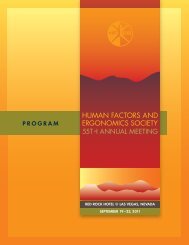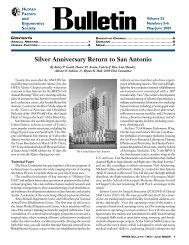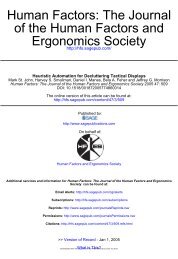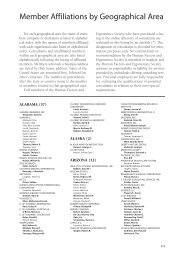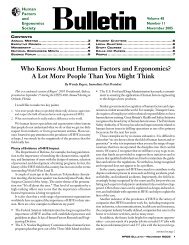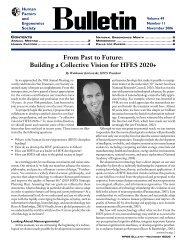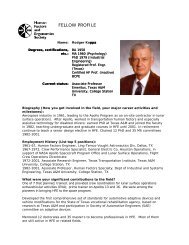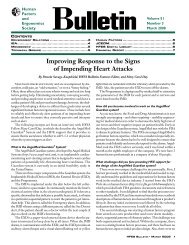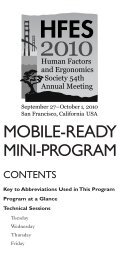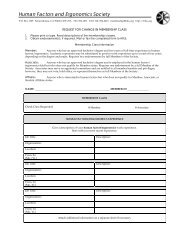Next Generation Air Transportation System Integrated Plan
Next Generation Air Transportation System Integrated Plan
Next Generation Air Transportation System Integrated Plan
You also want an ePaper? Increase the reach of your titles
YUMPU automatically turns print PDFs into web optimized ePapers that Google loves.
equiring review and/or change<br />
• Manage development of a national aviation weather<br />
database<br />
Cross-strategy Linkage<br />
This IPT will coordinate its work with the following IPTs to fulfill<br />
its mission:<br />
• Establish an Agile <strong>Air</strong> Traffic <strong>System</strong><br />
• Establish User-specific Situation Awareness<br />
• Develop <strong>Air</strong>port Infrastructure to Meet Future Demand<br />
• Establish an Effective Security <strong>System</strong> with out Limiting<br />
Mobility or Civil Liberties<br />
• Establish a Comprehensive Proactive Safety Management<br />
Approach<br />
• Harmonize Equipage and Operations Globally<br />
7.8 Harmonize Equipage and Operations<br />
Globally<br />
Ensure the establishment of performance based global standards<br />
to improve safety, security, mobility, and economic viability of air<br />
transportation.<br />
Tie into Objectives<br />
• Make it as safe abroad as it is at home<br />
• Promote equivalent security measures that are compatible<br />
throughout the international system<br />
• Promote U.S. aviation industry developments for global markets<br />
• Seamless use of equipment and operational procedures across<br />
international boundaries that satisfy U.S. needs<br />
• Perform the U.S. military’s mission worldwide<br />
• Make aviation environmentally friendly throughout the<br />
world<br />
• Achieve cost reduction, capacity expansion, and enhanced<br />
quality of air and space transportation services through<br />
international harmonization<br />
IPT Mission<br />
• Coordinate U.S. positions on standards and policies for<br />
international negotiations/collaboration:<br />
- Develop government/industry partnerships and<br />
collaborative relationships in the U.S. to coordinate longterm<br />
plans for global standards and policies<br />
- Organize unified U.S. policy positions related to all aspects<br />
of transformation, as developed by joint IPTs<br />
- Identify and resolve any differences between U.S. national<br />
and international objectives such as security and defense<br />
• Establish joint initiatives with international partners to<br />
develop technologies and policies:<br />
- Expand existing or establish new collaborative<br />
relationships with multilateral, regional, national, and<br />
non-governmental, international partners to coordinate<br />
long-term transformation plans globally<br />
- Share research, synchronize timetables for development,<br />
and adopt new technologies and concepts<br />
- Partner with major growth countries and regions such as<br />
India, China, and Latin America, in promoting common<br />
technology and procedures<br />
- Promote interoperability internationally and harmonize<br />
standardization of required systems<br />
• Advocate global adoption/proliferation of U.S.-preferred<br />
transformation concepts, technologies, procedures, and<br />
standards:<br />
- Identify and resolve potential conflicts between<br />
developments in the United States and in other countries<br />
pursuing harmonization or interoperability, as appropriate<br />
- Promote strategic aviation investment by other countries<br />
for economic growth and aviation safety and accessibility<br />
- Engage other countries in discussions about, and facilitate<br />
their adoption of, best practices worldwide to enhance<br />
safety and expand capacity<br />
- Assist other nations to acquire/adopt U.S. technology<br />
and procedures<br />
- Lead outreach campaign on global transformation<br />
- Promote increased aviation market liberalization<br />
Transformation Direction<br />
• Create unified U.S. air transportation positions in all<br />
major technology and policy areas for use in international<br />
discussions including timetables that can be used to align<br />
activities<br />
• Create economies of scale by aligning ATM and security<br />
developments across national boundaries<br />
• Streamline and accelerate international standardization<br />
processes using nontraditional means such as:<br />
Joint <strong>Plan</strong>ning & Development Office 33



